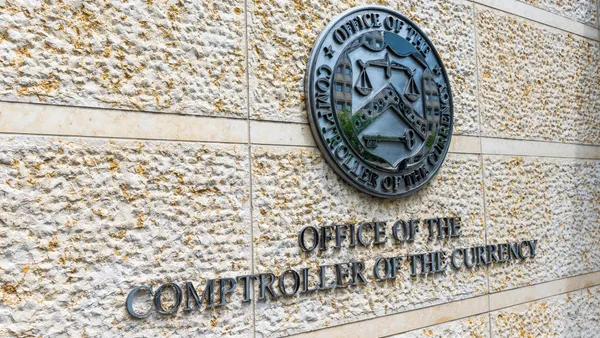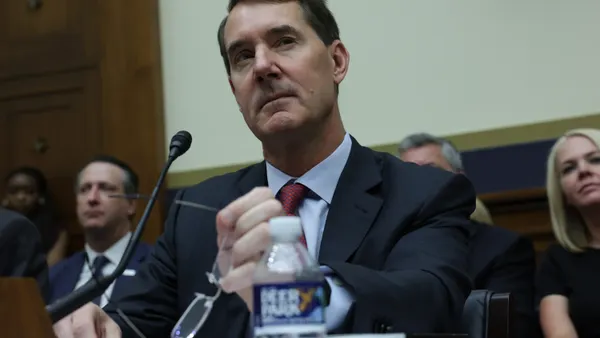Dive Brief:
- Wells Fargo will leverage Google Cloud’s artificial intelligence to power Fargo, its soon-to-be rolled out virtual assistant, the companies announced Monday.
- Customers will be able to use Fargo to turn on or off their debit cards, to check credit limits, and to search for specific transactions by date, amount or type. If Fargo can’t answer their questions, it’ll seamlessly connect users to a representative.
- In a Monday morning announcement ahead of a public launch at the Money20/20 conference in Las Vegas, the bank said its collaboration with Google Cloud marked “a pivotal milestone” in its strategy to reach customers.
Dive Insight:
Fargo represents the next step in Wells Fargo’s digital transformation, which began last year with the announcement of a 10-year plan to modernize its cloud infrastructure with Microsoft and Google. A statement Monday from the 170-year-old bank said it plans to “become digital-first and reinvent personal finance.”
“This partnership will expand our customers’ digital financial support network by enabling meaningful money conversations conveniently from their mobile device,” said Michelle Moore, Wells Fargo’s head of digital. “It's more than just dollars and cents; it's about uplifting our customers’ emotional and financial well-being by understanding their financial goals and providing the most convenient interactions to meet those goals.”
Fargo will use Dialogflow, Google’s conversational AI platform, to allow the virtual assistant to provide a tailored response to customers based on their intent, according to Monday’s announcement.
By pairing Google’s AI and natural language processing capabilities with Wells Fargo, the companies can “provide customers with connected, personalized tools that seamlessly blend with their financial needs,” said Yolande Piazza, vice president of financial services at Google Cloud.
Wells Fargo rebuilt its mobile app this year to much acclaim: Users ranked the bank third overall in J.D. Power’s 2022 U.S. Banking Mobile App Satisfaction Study, which touted the bank’s “complete redesign of the visual language and page layouts.”
Next year, Fargo will be available for Spanish speakers, following a similar move by U.S. Bank this year.
Fargo will also use predictive analytics to guide customers toward holistic financial health by spotlighting things like a price spike in a recurring subscription or increase in routine spending, calculating how much customers can spend in a way that both covers expenses and hits savings targets, and highlighting smart financial choices like debt consolidation or investment.
Representatives for both companies did not immediately return a request for further information on when Fargo would be released.
Digital banking has surged since the start of the COVID-19 pandemic, especially for younger customers. About two-thirds (65%) of millennials and Gen Z said they prefer a virtual assistant for customer service needs over waiting for a representative on the phone, according to a study Wells Fargo and Ipsos conducted this summer.
Time saved is the top benefit, seven in 10 respondents said.
Additionally, this isn’t Moore’s first foray into bank virtual assistant development: She developed Erica, Bank of America’s virtual assistant, when she was head of digital banking for that lender. Erica’s popularity skyrocketed from 2020 to 2021, with users tripling to more than 100 million.














